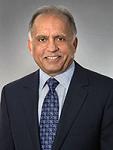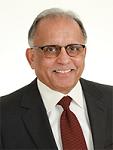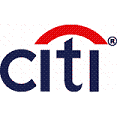Customer Experience
Accredited Consulting Service for Dr. Bhalla Ph.D. MBA BA Accredited Senior Consultant (ASC)
Executive Summary Video
The Appleton Greene Accredited Consultant Service (ACS) for Customer Experience is provided by Dr. Bhalla and provides clients with four cost-effective and time-effective professional consultant solutions, enabling clients to engage professional support over a sustainable period of time, while being able to manage consultancy costs within a clearly defined monthly budget. All service contracts are for a fixed period of 12 months and are renewable annually by mutual agreement. Services can be upgraded at any time, subject to individual client requirements and consulting service availability. If you would like to place an order for the Appleton Greene Customer Experience service, please click on either the Bronze, Silver, Gold, or Platinum service boxes below in order to access the respective application forms. A detailed information guide for this service is provided below and you can access this guide by scrolling down and clicking on the tabs beneath the service order application forms.
Client Telephone Conference (CTC)
If you have any questions or if you would like to arrange a Client Telephone Conference (CTC) to discuss this particular Unique Consulting Service Proposition (UCSP) in more detail, please CLICK HERE.
Bronze Client Service
Monthly cost: USD $1,500.00
Time limit: 5 hours per month
Contract period: 12 months
SERVICE FEATURES
Bronze service includes:
01. Email support
02. Telephone support
03. Questions & answers
04. Professional advice
05. Communication management
To apply – CLICK HERE

Silver Client Service
Monthly cost: USD $3,000.00
Time limit: 10 hours per month
Contract period: 12 months
SERVICE FEATURES
Bronze service plus
01. Research analysis
02. Management analysis
03. Performance analysis
04. Business process analysis
05. Training analysis
To apply – CLICK HERE
Gold Client Service
Monthly cost: USD $4,500.00
Time limit: 15 hours per month
Contract period: 12 months
SERVICE FEATURES
Bronze/Silver service plus
01. Management interviews
02. Evaluation and assessment
03. Performance improvement
04. Business process improvement
05. Management training
To apply – CLICK HERE
Consultant profile
Dr Bhalla is an approved Senior Consultant at Appleton Greene and he has experience in marketing, customer service and globalization. He has achieved a Doctor of Philosophy, a Master of Business Administration and a Bachelor of Arts (Hons). He has industry experience within the following sectors: Technology; Digital; Banking & Financial Services; Consumer Goods and Healthcare. He has had commercial experience within the following countries: United States of America; India; Singapore and South Africa, or more specifically within the following cities: Washington DC; New York NY; Gurgaon; Singapore and Johannesburg. His personal achievements include: championing human-centric leadership; digital transformation of customer experience; delivering action-oriented corporate training; implementing product and service innovation and leading high-performance global teams. His service skills incorporate: human-centric leadership; digital transformation; customer experience; corporate training and product innovation.
To request further information about Dr. Bhalla through Appleton Greene, please CLICK HERE.
Executive summary
Customer Experience
The way companies treat customers, or, the experience they provide their customers is one of the most critical factors in the profitable growth of most companies. It is also one of the most effective pathways to market leadership. Here’s why.
Peter Drucker, a famous global management guru, once famously declared that, “The only goal of a company is to get a customer (acquisition), and hang on to her (retention).” However, acquiring customers and retaining customers require different skill sets. Companies can always acquire customers by promising to deliver value in the future. But the only way they can retain their customers is by engineering and delivering compelling customer experiences. Positive customer experiences resulting in higher customer retention confer several strategic benefits on a company. First, they directly contribute to the profitability of the company because it costs 8-10 times more to acquire customers than to retain them. Next, positive customer experiences build unconditional trust between customers and the company. This trust translates to greater satisfaction and loyalty. It also translates to a greater willingness of customers to do more business with the company, and to provide positive referrals to non-customers.
Memorable customer experiences, however, don’t happen accidentally. They are the result of conscious and systematic investments in understanding customers search, buying, and consumption behaviors, in designing business processes to effectively serve customers’ needs, wants, and desires, in flawlessly implementing those processes, and in continuously innovating the experiences to keep them relevant and meaningful. Additionally, it also requires companies to acquire proficiency in winning the hearts and minds of customers, not just their wallets.
The reason why market leadership and excellence in designing, delivering, and innovating compelling customer experiences go hand-in-hand is because market leaders treat their customers as assets. They invest in them, genuinely want to serve them, and prioritize treating them right. Which results in customers trusting them more, staying with them longer, doing more business with them, and providing them with a greater volume of positive word-of-mouth recommendations.
Service Methodology
The service methodology will comprise 4 distinct phases.
The first phase, a pre-consulting step, will assess client needs and performance. Key company executives will be interviewed to gauge the current state of customer value and customer experience being delivered by the client’s company. Additionally, aspirations concerning the customer experience the client intends delivering to key target markets in the future will also be assessed. A SWOT (strengths, weaknesses, opportunities, and threats) analysis will provide the backbone of this phase. Special attention will be paid to evaluating competitive threats – experiences that competitors are delivering that customers value, the changing needs and lifestyles of key market segments and target markets, and the core competencies – machine and human – considered necessary for designing, delivering, and innovating relevant and meaningful customer experiences in the sector in which the client’s company operates.
The second phase will focus on inputs vital for designing relevant, meaningful, and memorable customer experiences. These inputs will be drawn from three key domains. The first domain is the experiential world of the customer. Research and information gathering techniques that allow clients to acquire a deeper understanding of the experiential world of the customer will be discussed. The second domain is the internal operating world of the client. Client companies are likely to have varying degrees of expertise and self-sufficiency concerning resources required for designing compelling customer experiences. The importance of collaboration, networks, and alliances will be discussed in areas where the client’s company is not strong, or self-sufficient. Lastly, inputs will also be drawn from the social, cultural, and technological environments in which customers and clients live and operate. Because access to necessary skills and resources have a significant bearing on clients’ abilities to design and deliver memorable customer experiences.
The third phase will focus on delivering the customer experience designed in phase two to strategic market segments and target markets. Participants will learn how best-in-class companies use traditional and non-traditional vehicles, like brand ecosystems, value platforms, human and machine interfaces, and social media for delivering compelling and memorable customer experiences to their customers. Special emphasis will be placed on the role of employees in delivering the intended customer experience. Both process and structural initiatives necessary for aligning employee experience with customer experience will be discussed.
The fourth phase will focus on the need for, and importance of innovating customer experiences. Customer experience mapping tools like touch-point analysis, customer-journey mapping, and service blueprinting will be discussed to provide participants with both the knowledge and the means to innovate customer experience. This discussion will be augmented with a discussion of Innovation frameworks, like the four-actions framework, that are commonly used for innovating customer experience.
The service will be delivered in three 4-hour modules to groups of 8-12 participants. However, if necessary, all parameters – number of modules and participants, and duration of each module – can be customized to meet the client’s needs.
Service Options
Companies can elect whether they just require Appleton Greene for advice and support with the Bronze Client Service, for research and performance analysis with the Silver Client Service, for facilitating departmental workshops with the Gold Client Service, or for complete process planning, development, implementation, management and review, with the Platinum Client Service. Ultimately, there is a service to suit every situation and every budget and clients can elect to either upgrade or downgrade from one service to another as and when required, providing complete flexibility in order to ensure that the right level of support is available over a sustainable period of time, enabling the organization to compensate for any prescriptive or emergent changes relating to: Customer Service; E-business; Finance; Globalization; Human Resources; Information Technology; Legal; Management; Marketing; or Production.
Service Mission
The dominant mission of this service is to help companies understand that how they treat their customers, or the experiences they deliver to their customers, are critical determinants of their survival and future prosperity.
Many companies claim giving top priority to customers, and operating with a “customer-first” mindset. But several academic researchers, business journalists, and industry captains, like Lou Gerstner and A.G. Lafley, former CEOs of IBM and P&G respectively, have lamented that the customer-facing behavior and actions of companies don’t always match these claims. A large number of companies still give priority to their operations, and build their businesses around their brands and technologies. They view their customers as costs, not as assets. Consequently, they are quick to sacrifice experiences customers value, such as personalized interaction, customer service, and product quality, in order to protect and boost their profits.
However, while this may produce favorable short-term results, it invariably damages the company’s health and wellbeing in the long run. Because customers that are treated poorly, or have experiences that don’t meet their expectations, are significantly more likely to leave or reduce the amount of business they do, and provide negative word-of-mouth recommendations. These activities affect both customer acquisition and customer retention. And if companies can’t acquire new customers, and they can’t retain current customers they can’t grow and prosper. There is no greater driver of the future health and prosperity of companies than satisfied and loyal customers. These customers stay and provide positive recommendations and referrals. The learning for companies being that the monies they spend on designing and delivering, relevant, compelling, and memorable customer experiences are not a cost, they are the most valuable investment they can make in their own future wellbeing and prosperity.
My credentials for fulfilling this mission follow.
Dr. Bhalla is an experienced leadership, marketing, innovation, and strategy professional with over thirty years of global experience as a multinational corporate executive, business consultant, entrepreneur, academic, and executive education specialist. During his professional tenure he has worked with companies in over thirty different countries on five different continents. His rich and varied experience working with diverse functional groups within companies operating in diverse cultures coupled with his academic and commercial credentials is a powerful asset in enabling companies innovate and implement new leadership narratives.
Service objectives
The following list represents the Key Service Objectives (KSO) for the Appleton Greene Customer Experience service.
- Rethinking Marketing
The purpose of this service objective is to help companies rethink marketing from a customer lens, and develop a deep appreciation for the role customer experience plays in growing an organization’s business. Marketing is one of the most misunderstood management disciplines; it is often equated with selling and advertising. Traditional marketing views customers mainly as a source of revenue and profits. As a result, companies tend to focus more on their products, services, and technologies, and relatively less on customers’ needs and preferences, which essentially amounts to conducting business on the company’s terms. However, in today’s interconnected and digitally empowered world this company-dictating-to-customer attitude is not a winning strategy, and could even have harmful consequences for a company’s long term health. Today’s customers are more educated, more sure of what they want and what they don’t want, and hence less willing to have companies decide what’s best for them. They have a voice and want to be heard, and they want to have a say in the types of products, services, and communications that are targeted at them. They are not interested in being passive consumers of products and services, but want to participate in co-creating and receiving compelling and memorable experiences. Hence, there is a need to rethink marketing, shift its focus from product-centricity to customer-centricity. The goal of marketing should not be selling customers by pushing products and services at them, but serving customers with customized solutions and experiences. Because, customers are more than mere wallets – sources of revenue – that companies need to win at the expense of competition, they are long-term assets that they should serve and nurture, because it’s the single best investment companies can make in their own long-term wellbeing and prosperity. A number of case studies and examples from a variety of companies, industries, and countries will be provided and discussed to illustrate how companies at the forefront of this new marketing thinking and practice build strong and enduring handshakes with customers. Specifically, how champion marketing companies treat their customers as assets, and how they win against competitors by investing in listening, engaging, and responding to their customers. - Understanding Customers
The purpose of this service objective is to stress the importance of entering the experiential world of the customer, so companies can develop deeper insights and a greater appreciation for the types of experiences and interactions customers seek and value. Just like there is no such thing as an average customer, there is no such thing as an average customer experience. Valuable and compelling customer experiences are always designed for specific market segments and target markets, because different market segments and target markets one size doesn’t fit all. Consequently, before companies can design compelling and memorable customer experiences they must first enter the customers’ world to understand the socio-cultural context in which customers operate. This will include their experiential needs, wants, and desires, which flow from their chosen lifestyles and interaction preferences. For example, some banking customers prefer the inter-personal experience of engaging with bank tellers, others the experience of convenience offered by Internet banking. It is crucial that companies step out of their own operating world and step into the shoes of the customer. Because, what’s vital is not not what products and services companies have on offer, what matters most is what customers do with these products and services – how they use the myriad of products and services offered to them to make their own lives better, easier, and simpler. This is also the goal of customer experience engineering, to make the lives of customers in selected segments and target markets better, easier, more convenient, and more satisfying. Concepts, methodologies, and frameworks that companies frequently use to step into the experiential world of the customer, such as ethnography, observation, focus groups, prototyping, and survey research, will be presented and explained so that participating executives can develop a deeper and more meaningful understanding of the experiences different customer segments and target markets value and seek. - Designing Experience
The purpose of this service objective is to help clients transition from insights to implementation. In this phase, clients will use what they have learned about the experiential world of customers and translate that into a comprehensive portfolio of interactions and engagements with the customer to deliver compelling and memorable experiences to key customer segments and target markets. This phase focuses on the client’s world and takes them on a systematic journey that encompasses the following aspects. First, is company aspirations. Like customers, companies too have preferences for the experiences they would like to deliver, and how they would like the market to acknowledge them. For example, a leading Malaysian bank aspired to design and deliver F.I.R.S.T experiences to its customers – Friendly, Innovative, Responsive, Simple, Trustworthy. Similarly, grocery stores may have aspirations for providing “organic food” experiences, car and tire companies for “safety,” and hotels for “home-like comforts and experiences.” Next is organizational competencies. All companies have distinct competencies that they would like to deploy in the designing of customer experiences. Some companies excel at product design, others in touch technologies, and others in their highly trained staff. These competencies, and their flip side – constraints – will determine significantly companies’ abilities to design relevant and meaningful experiences for their selected target markets. Third is corporate assets, which includes the strength of a company’s brands and the size of their network of collaborations and alliances. Champion experience providers, like Disney, invest significant resources in building and maintaining strong brands, and in developing an ecosystem around their core offering – transportation, hotels, restaurants and tour companies – to provide their customers with an end-to-end experience. Compelling and memorable customer experiences do not happen by accident; they are intentional, and the result of investments in time, money, effort, and people. Case studies and examples will be provided to illustrate how companies that excel at providing memorable and meaningful customer experiences use specialized techniques and processes, like “Touchpoint Mapping,” “Customer Journeys,” and “Service Blueprinting,” to manage and orchestrate elements that comprise the design phase of customer experience engineering. These techniques and processes will also come in play in the “Delivery” and “Innovation” phases which follow. - Delivering Experience
The purpose of this objective is to acquaint clients with major vehicles for delivering compelling and memorable experiences, so there is minimal loss of value between how the experience is designed, and how it actually is received by customers. As the old saying goes, the proof of the pudding is in the eating; companies claiming they deliver the best customer experience counts for little, what the customer receives and experiences is all that matters. Two classes of customer experience delivery vehicles will be emphasized during this stage. The first relates to all visible touchpoints between the company and the customer where the customer has an opportunity to engage and interact with the company. These touchpoints could be as routine as company websites, or as complex as special technology interfaces, like “Apps” that facilitate mobile and densely packaged, single point of contact experiences. The second class concerns vehicles that align employee objectives with customer experience objectives. These vehicles could involve organizational structure, processes to support customer interactions, incentives, or some combination of all three. No company can deliver compelling customer experiences if their employees are not committed to delivering that experience. Gaps in customer experience designed and customer experience received can often be traced to misalignment in employee goals and customer expectations. This phase will also discuss the role played by humans and technology in delivering relevant and meaningful experience, and how best to deploy both. Because, despite the phenomenal increase in technology and the digitalization of business transactions, humans have not been become irrelevant in delivering customer experiences. The issue is not technology vs. humans, it is how best to couple technology and human beings to deliver the optimum customer experience, either remotely or proximally, across all touch points and through all phases of the customer decision making journey. Here again, a variety of case studies and examples will be provided to illustrate exemplary customer experience delivery practices. Techniques and tools discussed in the previous phase, such as customer touchpoints, customer journeys, and service blueprinting will also be used here to explain how companies can measure and detect where the company is meeting or exceeding customer expectations on customer experience delivery, and where it is falling short. - Innovating Experience
The purpose of this objective is to impress on clients the importance of ongoing innovation in designing and delivering customer experience. This section will explain and clarify that innovation is the sum of all activities undertaken by companies that make the day-to-day lives of customers better, easier, more convenient, and more satisfying. It will also explain that the reason why investment in innovation is non-negotiable is because the experiential world of customers is constantly changing. How customers consume music, how they learn and entertain themselves, and how they shop is not the same as it was in the past. Consequently, companies have to constantly be on the lookout for innovations that will keep customer experiences relevant, meaningful, and contemporary. Innovation is a key driver of business growth, since it plays a vital role in acquiring and retaining customers. The importance of planning and managing innovations to influence the end-to-end customer experience will also be emphasized, because shortfalls in customer experiences in one area can’t be compensated with overachievement in another. For example, companies may do a superlative job in innovating breakthrough products and services, which is bound to attract new customers. But if the company doesn’t complement its product innovation investments with commensurate investments in service innovation, customers may not be attracted to buy its products. They may choose to switch to competitor’s products because they offer a superior service and support experience. The techniques and tools encountered earlier for designing and delivering customer experience, such as customer touchpoints, customer journeys, and service blueprinting, will also be discussed in this phase as they can all serve as a basis for guiding the customer experience innovation efforts of the company. Finally, the importance of customers as collaborators in the innovation of customer experience will also be stressed. All customer experiences are co-created, because compelling and relevant customer experiences materialize only when customers interact with the company’s offerings. If customers don’t interact with a company’s offering, be it product or service, the experience potential inherent in that offering will never materialize. iPod and Skype provide excellent examples. MP3 players and videoconferencing facilities existed before the iPod and Skype. But the customer experience offered by these offerings was far superior, mainly because customers co-created experience value for themselves. They interacted with iPod and Skype in ways that went beyond how the two companies had envisioned customers using their offerings.
Testimonials
Deloitte
“Dr. Bhalla designed and delivered two sessions on Leadership (Trusted Business Advisor) for our senior managers through his association with ISB. Senior Managers at Deloitte play a pivotal role in the organizational strategy, direction, and success. They form the leadership pipeline and are future Partners and Directors of the firm. Given their significant role and responsibility, their development is a strategic and critical function in the firm. Dr. Bhalla was extremely professional and easy to work with during the design and delivery of these programs. He took time to understand our context and needs in detail. This time spent upfront helped him design a very focused program for our senior managers. The program delivery was very interactive and highly effective. Dr. Bhalla was able to connect with all participants through his delivery style and relevant content. The post program survey was a testament to the program effectiveness with most participants agreeing that it will have a positive impact on their work.”
Citi
“I had the pleasure of participating in two of Dr. Bhalla’s courses – Marketing Strategy and Customer Experience – for my online MBA program at the University of Maryland’s Robert H. Smith School of Business. In both courses, Dr. Bhalla successfully managed to cover a large amount of content in a very short time, especially for the Customer Experience course, which was only 5 weeks long. Dr. Bhalla ‘s passion in Customer Experience Marketing is evident in the way that he teaches. The sessions are engaging and interactive; there is no passive learning in Dr. Bhalla ‘s classes and programs. Dr. Bhalla often says that in order to understand the material, it is not enough to simply read it, one must wrestle with it to see the content in new ways and fully understand it. We did this through creative group projects, where Dr. Bhalla challenged us to apply course concepts to contemporary and relevant scenarios. Purposefully, Dr. Bhalla encourages each group to develop their own unique customer experience solutions so we can learn from each other. As a result of this action-based learning, I find the course concepts have been ingrained in my mind, and I frequently call upon the critical client-centric tools and frameworks that Dr. Bhalla taught me.”
Capital One
“Dr. Bhalla invests time in open listening and observation, and quickly absorbs critical information and details. Once having formed thoughts and opinions, Dr. Bhalla is a thoroughly engaging communicator, whether addressing a large group or an individual. He effectively shares his ideas and recommendations with a personalized and customized approach that is always on target, leaving a listener inspired! A few examples follow. By leveraging Dr. Bhalla’s professional expertise at integrating qualitative and quantitative data into insightful findings, I was able to bring added value to my larger team. This greatly benefited my organization from a business perspective, and allowed me to grow personally. Dr. Bhalla also worked effectively with senior leadership, and staff at all levels, to collaborate and advise on effective solutions to problem issues as an internal advisor. His sought-after counsel was a key input in organizational decisions.”
JLL
“I had the wonderful opportunity to meet and get to know Dr. Bhalla as a professor during a professional leadership program at University of Maryland School of Business. The course was designed as two intense week-long sessions several weeks apart. Dr. Bhalla made such an impression on me during the first session that when impending weather threatened to shorten the program, his module was the one I was truly concerned about missing. Dr. Bhalla’s client-focused curriculum helped me identify major areas of improvement in our current client pursuit efforts, and we have informally expanded new client preparation protocol to continually direct the preparation efforts towards a more prescriptive strategy development customized for each new client opportunity. Another key inspiration for me was Dr. Bhalla’s focus on client experience. Dr. Bhalla had our class explore the buying experience from the client point-of-view and presented practical and applicable processes for mapping the client journey. This is a wonderful exercise to identify where we can simplify the process for our clients. I am currently exploring how we can implement these changes within our firm. I highly recommend Dr. Bhalla’s consulting and training programs. They are insightful, relevant and applicable to the current business climate while presented in a fun, engaging manner that makes everyone eager to learn more, and apply that knowledge.”
University of Maryland, Robert H. Smith School of Business
“Dr. Bhalla is a leading expert on helping clients and students design, deliver, and innovate compelling and meaningful customer experiences. I have been fortunate to have him teach modules on customer value innovation in several executive education programs offered by the Center for Excellence in Service (CES) here at Smith. Managers in our programs rave about the high quality and relevance of his course content and his vivid, timely examples of how firms innovate to offer continuous value and relevant experiences to their customers. Dr. Bhalla practices what he preaches. He continuously updates his teaching and consulting material to offer the latest information on best practices in customer experience engineering and customer value creation. He receives the highest ratings of any of our consultants and trainers on the practical implications of his content. Perhaps the greatest compliment is that managers leave his sessions planning to take back what they have learned from him to their firms.”
More detailed achievements, references and testimonials are confidentially available to clients upon request.
Industries
This service is primarily available to the following industry sectors:
Technology
Technology is all pervasive and omnipresent in today’s world, and is radically reshaping all aspects of work and life from everyday essentialities of cooking, cleaning, transportation, and security to discretionary needs, such as healthcare, education, and entertainment. In the business world, technology is the backbone of the operations of virtually every business, and is also helping shape business strategy, and transforming business, revenue, and growth models. There was a time when technology was equated with the IT department and the hardware that sat on our desks and the software that helped us operate the hardware. Today, there is scarcely a department in any business that doesn’t use technology; even HR departments uses technology for managing and developing the human potential of their respective organizations. In fact, according to Gartner, marketing, not IT, will be the largest buyer of technology by 2018. Additionally, technology is also ubiquitous and essential to the day to day lives of typical customers. Cars today have more code than the computers of a few years ago…and there is no turning back. We live in an era of digital disruption, an era in which technology simultaneously creates and destroys customer value and customer experience. Consequently, it is important for companies to embrace technology and leverage it so that the value and experience they are providing to customers doesn’t become obsolete.
We use technology as if it were a common noun, it is anything but that. Cloud computing is technology, as is a common app, as is virtual reality, and as is IoT (Internet of things). However, each of them are a source of differentiated customer value and the basis of a differentiated customer experience. Which is why as the world of technology expands and dominates businesses and people’s lives, the all important question of value innovation will become even more relevant. As Steve Jobs likes to remind technology fanatics, “Smart companies don’t push technologies on unsuspecting customers, they work backwards. They begin by asking what great value and experiences they should deliver customers and then ask their engineers and designers to develop and deliver the targeted value and experience.” The number of trends that characterize technology – robotics, AI, nanotechnology, etc. – are too numerous to enumerate and discuss here. What is important to note though is that the world of technology is constantly morphing and converging, making it even more demanding for companies to stay connected with the customer and tackle issues related to value innovation.
Healthcare
Like education, entertainment, and a host of other industries, healthcare is in the throes of radical transformation. The industry is being asked to cater to exponentially increasing demand, which is both varied and complex, without passing on ever increasing costs to the end user. Not surprising therefore, that for several years now, the pharma companies have been urging themselves to migrate from being pill centric to becoming patient centric. Hospitals and other healthcare providers have been seriously rethinking their business models and moving away from treating diseases to championing wellness, and payers have been focused on pharmacoeconomics to balance costs and relative efficacy of alternate treatments. The number of moving parts grabbing the industry’s attention have increased dramatically in the past few years. New technologies, ranging from electronic health records, and digital tools for supporting diagnosis to telemedicine and robotics are being embraced aggressively to cater to the burgeoning demand. The changing demographics of the population, especially the needs of the elderly and the terminally ill, are posing fresh caregiving challenges, which are not easy to solve. Costs show no signs of abating, even as voices in support of individualized medicine are getting louder. Not only are new specialty drugs highly costly to produce, new viruses, like the Zika virus, and old standards like the flu, which have adapted and become more resistant to commonly available antibiotics, are stressing the system constantly, diminishing the ability of the healthcare system and industry to provide real, meaningful, timely, and tangible value at an affordable price.
Consequently, the industry is under greater public and legislative scrutiny. As more health care data, particularly financial, such as physician fees, comparison of insurance plan premiums, and payments by drug and medical device manufacturers to physicians and other care providers, becomes public, the power of the public to influence important medical policies and decisions is increasing, eroding the power and sole authority status of traditional gatekeepers, like physicians and hospitals. As the focus of the industry shifts from treatment to prevention and wellness, from individual health to social and community health, issues related to value innovation – customer value and customer experience – will become even more important. The word customer is used deliberately, because not everybody the healthcare industry will and should engage will be a patient. The system will need to experiment with new models of wellness, treatment, and payment to meet customer needs, so increasing healthcare value, which is both relevant and timely, can be delivered unaccompanied by soaring costs.
Banking & Financial Services
In the next three to five years, banking and financial services is likely to be disrupted more than any other sector. The nature of money is changing, as is the world of payments. It will not be cash, currency, and coins as we know it today. A host of innovations, like digital wallets, blockchains, cryptocurrencies, automation of cash and money flows, payment embedded in the Internet of Things, where Toyota cars pay for gas, and Nespresso machines pay for coffee, and Electrolux fridges pay for milk delivery are already beginning to rear their heads. In this fragmented environment where cash will largely be invisible and payments highly distributed, often in closed-loops, third party institutions like banks and financial services that currently handle cash and payment transactions will have to rethink their role and purpose; they won’t have an option.
Paradoxically, as the reach of technology grows and innovations radically transform the structure of banking and financial services, customers will increasingly want to be treated as unique individuals, and not as a nameless, faceless statistic in the company’s database. Customizing customer value and customer experiences will be at a premium, making value innovation even more critical. We are already getting a glimpse of this with the rise of big data and analytics. Banks and financial service companies are pursuing micro-segmentation zealously so they can convince their customers that they do care about them as individuals. Lastly, with the convergence of financial instruments, cash, credit, savings, investments, etc., customer loyalties will either be distributed across a number of players, or highly concentrated with one or two. In such an environment, value innovation will become even more critical for customer acquisition and retention, and therefore for the long term well-being of the organization.
Education
Even though all forms and levels of education are changing, this section will focus only on higher education (bachelor’s degree and above) delivered by colleges and universities throughout the world. Several factors are turning higher education on its head. On the demand side, the demographics of students, especially in terms of age, income, and diversity has changed and is unlikely to reverse. Today’s students are likely to be older, are more likely to come from poorer families, and from ethnic backgrounds where parents may not have gone to college. They also have different attitudes and expectations, notably, they have an unrealistically high opinion of their own abilities, and are not merely interested in learning – they want a variety of entertaining experiences during their tenure at college. The changing mix and experience expectations of students will continue to pose challenges for colleges and universities. Additionally, not all students want to be full time students, or be physically present in the class room. Part-time, evening, and weekend students are definitely on the rise, as are those who want to obtain their degree in digital and online forums.
On the supply side the number of institutions offering degrees, especially those popular with recruiters, like MBA, have increased dramatically. In India, for example, in the 1980s there were only five major MBA degree granting colleges. Today, virtually every mid-to-large sized city can boast of colleges that grant an MBA degree. Privately owned colleges and universities that operate for profit, and smaller community colleges that cater to students in specific geographies has also increased. However, quality of education has not kept pace with the proliferation of institutions globally; the biggest constraints being funding, quality of trained teachers, and the nature of the curriculum. Several colleges and universities are experimenting with technology in the class room to augment and boost student and teaching experience, with the hope of raising the quality and relevance of education delivered. More students participate in MOOCs, distance learning through online courses, and hybrid formats. While the jury is still out on whether technology will help bring greater student engagement and improve the quality of learning, questions concerning relevance of current higher education to the needs and demands of the changing workplace are being asked more frequently. Employers don’t believe colleges and universities are turning out the kinds of candidates they need, which is why globally, many companies, and governments, are investing in their own training and education programs. In a scenario like this an understanding and application of value innovation with its focus on customer value and experience is critical, if the system is to create positive value and experiences for all stakeholders – students, teachers, employers, and those providing the funds.
Entertainment
There was a time when entertainment took place at fixed times, in fixed formats, and at fixed venues – TV, radio, movie theaters, jazz clubs, music concerts, and comedy clubs. Customers took what they were offered and if they missed their favorite show they kicked cans and tried finding solace in profanity. That was truly a long time ago, the entertainment industry unrecognizable today. It changes every time a new song is released – Uptown Funk; every time a new video is released – Gangnam Style; every time a new genre takes off – reality TV, hip hop rap. Today, entertainment is truly a multidimensional, multidirectional collaboration between content producers, content providers and content consumers. Any and every content can be entertainment; the old brick walls between information, education, and pure entertainment have crumbled. TED talks are entertainment, as are improve comedy shows, as are funny home videos on YouTube. Further, this content can be consumed anywhere, anytime, on any screen, frequently without payment. Additionally, the content is often consumed in ways the originator had not intended – Harry Potter theme parks and Lego blocks, or Star Wars light sabre toys, or a mash up of history and science fiction as video games.
The proliferation of devices and venues, traditional TV sets, smart TVs, smart phones, tablets, TV screens at airports, in bars, lounges, and waiting areas, such as hospital and hotel lobbies, accelerates the change the industry and customers are experiencing. Even buildings and walls can be a delivery channel for entertainment – a trip to the Ginza district in Japan, or to Times Square in New York can attest to that. Add to that the ability to watch anything asynchronously and you have an entertainment landscape that rarely stands still. Take the example of Hulu. It was born out of the YouTube category, where people flocked for quick snippets of video. Now, however, a whopping 73 percent of Hulu-goers use the service specifically for watching television shows. In this panoramic landscape it is equally difficult to say what competencies qualify a company to be called an entertainment company. Ostensibly, Microsoft, makers of Xbox is an entertainment company. Hallmark started off as a greeting card company, but is an entertainment company. Netflix started off as a DVD retailer, but is an entertainment company, as is Amazon. In this dynamic environment, of constantly evolving technologies and content, where entertainment is the outcome of active collaboration between content producers, device manufacturers, and delivery companies (Comcast), and the meaning and value of which is co-created with customers, who pick the time, venue, and vehicle of consumption, value innovation – creating, delivering, and innovating the right value and experience for the right customer at the right time takes on even greater importance.
Locations
This service is primarily available within the following locations:
San Francisco CA
The Bay area is an umbrella term for a geographical area that encompasses the major metropolitan areas of San Francisco, San Jose, and Oakland, and is often referred to as Silicon Valley, the epicenter of technology, disruptive innovation, and bold entrepreneurship in America. In fact, the term Silicon Valley, is generally used as a synecdoche for the American high-technology economic sector, and has become a synonym globally for leading high-tech research and enterprises, inspiring similar named locations, research parks, and technology centers with a disruptive innovation culture. Silicon Valley is home to many of the world’s largest high-tech corporations, thousands of startup companies, and some of the most famous universities in the world, like Stanford. The list of hi-tech companies headquartered there, or with origins in the area, is a ‘who’s who’ of the industry: IBM, Hewlett-Packard (HP), VMware, Ford Research and Innovation Center, Palo Alto Research Center (PARC), Space Systems/Loral, Tesla Motors, Ning, IDEO, Skype, Palantir Technologies, Google, Facebook, Logitech, Intuit, Pinterest, and PayPal. It is also the leading hub and startup ecosystem for high-tech innovation and development, accounting for one-third of all of the venture capital investment in the United States. And with technology fueling significant transformation in a number of sectors, such as healthcare, education, energy, transportation, and entertainment, the future of Silicon Valley as a key engine of economic growth and prosperity is extremely bright. Value Innovation is especially relevant in this region since true growth only occurs once the benefits of novel technologies are commercialized and passed on to customers.
New York NY
Alternately called “the city that never sleeps,” “the big apple,” and the “cultural capital of the world,” New York city is a global hub of international business and commerce. In 2012, New York City topped the first Global Economic Power Index. Home to Wall street, The New York Stock Exchange and Nasdaq, the city is a major center for banking and finance, retailing, world trade, transportation, tourism, real estate, new media as well as traditional media, advertising, legal services, accountancy, insurance, theatre, fashion, and the arts in the United States. Many Fortune 500 corporations are headquartered in New York City, as are a large number of foreign corporations. One out of ten private sector jobs in the city is with a foreign company. New York City has been ranked first among cities across the globe in attracting capital, business, and tourists. It is these features of New York that repeatedly earn it a high ranking as America’s leading cities of the future. Additionally, real estate is a major force in the city’s economy, and the total value of all New York City property was assessed at US$914.8 billion for the 2015 fiscal year. As are the advertising, PR, and publicity sectors. Some of the world’s largest advertising agencies, like Omnicom Group and Interpublic Group are based in Manhattan, as is the world’s premier PR company, PR Newswire. Other important sectors include hospital health care, medical research and technology, non-profit institutions, and universities, such as New York and Columbia University. Manufacturing, in decline a few years ago is showing resurgence, as is the city’s garment industry. SME’s are also on an upward trend especially in the information and service sectors. Food processing is another sector that is extremely vibrant in New York, with chocolate being New York City’s leading specialty-food export; Godiva, one of the world’s largest chocolatiers is headquartered in Manhattan. Home to the United Nations Headquarters, New York is an important center for international affairs. Hundreds of languages are spoken in the city, and many of the its districts, landmarks, museums and parks are well known throughout the world including Times Square, the Broadway theatre district, Wall Street, Chinatown, the Empire State and Chrysler Buildings, Statue of Liberty, Metropolitan Museum of Art and Bronx Zoo, and attract millions of tourists throughout the year. For these reasons New York will continue to dominate the consciousness of businesses and customers globally. Businesses operating or beginning operations here can truly benefit from the application of value innovation principles.
London UK
London is very similar to New York and to Tokyo. The big three are known as often referred to as the “command centers” of the global economy. In 2014, Forbes rated London as the most influential city in the world. The city has also been voted as the Europe’s city of the future. The business climate is robust and inviting. It is seen by the World Bank as fourth in the world for ease of doing business. There are plans for growth that will make it even easier to conduct business. Since hosting the Olympics in 2012, London has a new energy about planning, cutting corporate taxes, investing in infrastructure—especially housing and transportation—and eliminating regulation that hinders business growth. London has over 480 overseas banks, more than any other city in the world; Canary Wharf is one of the biggest financial centers in Europe. Over 85 percent (3.2 million) of the employed population of greater London works in the services industries. The City of London is home to the Bank of England, London Stock Exchange, and Lloyd’s of London insurance market. Over half of the UK’s top 100 listed companies (the FTSE 100) and over 100 of Europe’s 500 largest companies have their headquarters in central London. Over 70 per cent of the FTSE 100 are within London’s metropolitan area, and 75 per cent of Fortune 500 companies have offices in London. Along with professional services, London has a high concentration of media companies are concentrated in London; media distribution is London’s second most competitive sector. The BBC is a significant employer, while other broadcasters also have headquarters around the City. Many national newspapers are edited in London. London is also a major retail center and in 2010 had the highest non-food retail sales of any city in the world. Construction and transportation are also growing industries – the need for office space, buildings and infrastructure continues, as well as does attendant real estate investment opportunities. In terms of transportation, besides periodic updating of infra-structure, there are plans for cross rail construction in the city as well as expanding airport capacity. London and the U.K.in general have entered the tech world with both feet. Its tech cluster of businesses is home to one of the largest concentrations of small, fast-growing digital technology companies in Europe. Development of this tech hub is a priority for London. In addition, there is significant support for high-growth and innovative small and mid-sized firm to export and take advantage of opportunities in emerging markets. A growing number of technology companies are based in London notably in East London Tech City, also known as Silicon Roundabout. For all these reasons, London and the businesses operating within it, are fertile ground for the application and implementation of value innovation processes.
Washington DC
Washington DC is the political heartbeat of USA, and is often referred to as the most powerful city in the world. Government organizations and agencies though are not the only major stakeholders in the city. Associations, not-for-profit organizations, volunteer organizations, and media companies also occupy a prominent place in the city’s economy. The greater Washington DC area is also the headquarters of large Fortune 500 corporations and companies, such as Fannie Mae, Lockheed Martin, General Dynamics, Northrop Grumman, Capital One, Computer Sciences Corporation, Marriott International Inc., Hilton Worldwide Holdings, Booz Allen Hamilton, Discovery Communications, Host Hotels & Resorts, and Gannett to name a few. And to some global companies like Audi, VW, and BAE. Part of the greater Washington DC area is extended to include the MD-355/I-270 corridor in Maryland. I-270 is sometimes called “DNA Alley,” and is the spine of Montgomery County’s biotech cluster; it is home to over 300 life sciences and biotech companies. The corridor also houses over 200 IT companies, and several state sponsored innovation and entrepreneurship incubators. Fairfax County and Northern Virginia are also part of the greater Washington DC area, and is home to more than 50% of the Fortune 500 companies located in this region. It is also home to some of the fastest growing communication, technology, education, and energy companies, like Iridium Communications, Comscore, Appian, Clarabridge, Strayer University, Touchstone Energy, and to some established giants, like Mars, Hilton Worldwide, Gannett, and Freddie Mac. Washington DC is also one of the most attractive tourist destinations in the world. Its museums and monuments, like the Smithsonian, the Air and Space Museum, Lincoln Memorial, and The Capitol are world famous and attract millions of visitors from around the world and from within USA. Given the geopolitical importance of the city as well as its thriving commercial economy, a large percentage of which is in the high growth sectors of the economy, make Washington DC an excellent market for the application and implementation of value innovation processes.
Bengaluru IN
Bengaluru, formerly Bangalore, once known as Pensioners Paradise is now known as the Silicon Valley of India. The city is described as “a gateway to new global frontiers” and “a harbinger of a new global labour force that works in cyberspace and that, like much of the world’s financial markets, operates beyond the reach of governments.” The city’s industrial development began with public sector undertakings in machine tools, aircraft building, electronics, space exploration, and science and technology research. These investments and institutions brought a highly talented workforce to the city, and made the city a hub of electronic industries, which in turn attracted several other medium and small manufacturers. It is this pedigree that has attracted some of the largest companies in the world, like Titan, HP, GE, IBM, and Texas Instruments to invest in Bangalore, and open global R&D and innovation centers there. Global Indian companies, like Infosys, also established their headquarters in Bangalore due to the highly educated and skilled workforce and economic climate. Bangalore today contributes the bulk of IT exports from India, and is universally recognized as one of the most innovative cities in the world. Consistent with its software, technology, and electronics heritage, the city boasts of several technology parks that are home to hundreds of large, mid-sized, and small companies. Additionally, Bangalore also has the highest concentration of biotech companies in India; more than 40% of India’s biotech companies are based here. Organizations like Institute of Bioinformatics and Applied Biotechnology, ICICI, and Biocon are recognized globally for significantly reshaping the contours of biotech science and research. The city attracts more US investment than any other city in India. The boom in technology, software, and biotech has also spawned a boom in lifestyle support industries like, hotels, consumer goods, golf courses, and most notably custom-built housing and entertainment. The city is also home to a large number of high net worth individuals; it ranks third after Mumbai and Delhi. For all the reasons presented above, Bengaluru, or Bangalore, is an extremely attractive market for the application and implementation of value innovation processes.
Clients
This service’s current clients or employers include:
Microsoft
Microsoft Corporation, is an American multinational technology company headquartered in Redmond, Washington, that develops, manufactures, licenses, supports and sells computer software, consumer electronics and personal computers and services. Its best known software products are the Microsoft Windows line of operating systems, Microsoft Office office suite, and Internet Explorer and Edge web browsers. Its flagship hardware products are the Xbox game consoles and the Microsoft Surface tablet lineup. It is the world’s largest software maker by revenue, and one of the world’s most valuable companies and brands. Founded by Paul Allen and Bill Gates on April 4, 1975, its mission is to empower every person and every organization on the planet to achieve more, by implementing its strategy of delivering best-in-class platforms and productivity services for a mobile-first, cloud-first world, with a goal of reinventing personal and business productivity and processes, through intelligent cloud platforms, and by creating more personal computing.
Citi
Citigroup Inc. or Citi is an American multinational investment banking and financial services corporation headquartered in Manhattan, New York City. Citigroup was formed from one of the world’s largest mergers in history by combining the banking giant Citicorp and financial conglomerate Travelers Group in October 1998. Currently in the top 5 of all bank holding companies by assets in the US, it was at its height, until the global financial crisis of 2008, the largest company and bank in the world as measured by total assets. Citi’s mission is to serve as a trusted partner to its clients by responsibly providing financial services that enable growth and economic progress. Its core activities are safeguarding assets, lending money, making payments and accessing the capital markets on behalf of its clients, which include both everyday people and some of the world’s largest companies. It also provides financing and support to governments at all levels, so they can build sustainable infrastructure, such as housing, transportation, schools and other vital public works.
Capital One
Headquartered in McLean, Virginia, Capital One is an American diversified bank that offers a broad array of financial products and services to consumers, small businesses, and commercial clients. A Fortune 500 company, Capital One has one of the most widely recognized brands in America. As one of the nation’s top 10 largest banks based on deposits, Capital One serves banking customers through branch locations primarily in New York, New Jersey, Texas, Louisiana, Maryland, Virginia, and the District of Columbia. It is also one of the largest credit card issuers in the USA, and was an early adopter of big data and analytics. The company has an enviable reputation for having built a preeminent brand on the back of market experimentation, micro-segmentation, tailored offerings, and targeted mailings to specific market segments and target markets.
Deloitte
“Deloitte” is the brand under which tens of thousands of dedicated professionals in independent firms throughout the world collaborate to provide audit, consulting, financial advisory, risk management, tax, and related services to select clients. These firms are members of Deloitte Touche Tohmatsu Limited, a UK private company limited by guarantee (“DTTL”). Each DTTL member firm provides services in particular geographic areas and is subject to the laws and professional regulations of the particular country or countries in which it operates. All the facts and figures that talk to our size and diversity and years of history, as notable and important as they may be, are secondary to the truest measure of Deloitte: the impact we make in the world. So, when people ask, “what’s different about Deloitte?” the answer resides in the many specific examples of where we have helped Deloitte member firm clients, our people, and sections of society to achieve remarkable goals, solve complex problems or make meaningful progress. Deeper still, it’s in the beliefs, behaviors and fundamental sense of purpose that underpin all that we do. With over 150 years of hard work and commitment to making a real difference, our organization has grown in scale and diversity—more than 225,000 people in 150 countries, providing audit, tax, legal, financial advisory, enterprise risk, and consulting services—yet our shared culture remains the same.
Indian School of Business
Based in Hyderabad, India, The Indian School of Business (ISB) evolved from the need for a world-class business school in Asia. The founders, some of the best minds from the corporate and academic worlds, anticipated the leadership needs of the emerging Asian economies. They recognized that the rapidly changing business landscape would require young leaders who not only have an understanding of the developing economies but who also present a global perspective. The ISB is committed to creating such leaders through its innovative programs, outstanding faculty and thought leadership. Funded entirely by private corporations, foundations and individuals from around the world who believe in its vision, the ISB is a not-for-profit organization. With a strong emphasis on entrepreneurship, the impact of technology on commerce, and the emerging markets, programs at the Indian School of Business (ISB) focus on managing business in fast-evolving environments. It offers a unique one-year Post Graduate Program in Management (PGP), as well as short-duration Executive Education programs for middle and senior management (CEE), a part-time Post Graduate Program in Management for Senior Executives (PGPMAX), Management Program for Family Business (MFAB) for young business leaders of family businesses, a five-year doctoral-equivalent Fellow Program in Management (FPM), and a Post Doctoral Research Fellowship Program. ISB works closely with its associate schools, like Wharton Business School, London School of Business, and Northwestern University’s Kellogg School of Business, and leading academic area experts from around the world to create contemporary programs that apply Western concepts into the Asian context. ISB also has established and strong corporate and industry links which ensure that the program curriculum reflects global best practices, is international in perspective, and delivered according to world-class standards.
Benefits
Management
- Corporate reputation
- Higher profitability
- Faster growth
- Competitive advantage
- Customer trust
- Customer loyalty
- Favorable media
- Strategic innovation
- Employee satisfaction
- Meaningful work
Marketing
- Competitive advantage
- Customer retention
- Customer loyalty
- Customer satisfaction
- Positive referrals
- Profitable sales
- Engaged customers
- Fewer complaints
- Experience innovation
- Experience customization
Customer Service
- Fewer complaints
- Problem resolution
- Happier customers
- Job satisfaction
- Engaged employees
- Lower costs
- Customer satisfaction
- Customer loyalty
- Positive referrals
- Service reputation
Bronze Service
Monthly cost: USD $1,500.00
Time limit: 5 hours per month
Contract period: 12 months
Bronze service includes:
01. Email support
02. Telephone support
03. Questions & answers
04. Professional advice
05. Communication management
SERVICE DESCRIPTION
The Bronze Client Service (BCS) for Customer Experience provides clients with an entry level option and enables client contacts to become personally acquainted with Dr. Bhalla over a sustainable period of time. We suggest that clients allocate up to a maximum of 5 Key Employees for this service. Your Key Employees can then contact the consultant via email, whenever they feel that they need specific advice or support in relation to the consultant’s specialist subject. The consultant will also be proactive about opening and maintaining communications with your Key Employees. Your Key Employees can list and number any questions that they would like to ask and they will then receive specific answers to each and every query that they may have. Your Key Employees can then retain these communications on file for future reference. General support inquiries will usually receive replies within 48 hours, but please allow a period of up to 10 business days during busy periods. The Bronze Client Service (BCS) enables your Key Employees to get to know their designated Appleton Greene consultant and to benefit from the consultant’s specialist skills, knowledge and experience.
Silver Service
Monthly cost: USD $3,000.00
Time limit: 10 hours per month
Contract period: 12 months
Bronze service plus
01. Research analysis
02. Management analysis
03. Performance analysis
04. Business process analysis
05. Training analysis
SERVICE DESCRIPTION
The Silver Client Service (SCS) for Customer Experience provides more time for research and development. If you require Dr. Bhalla to undertake research on your behalf, or on behalf of your Key Employees, then this would understandably require more time and the Silver Client Service (SCS) accommodates this. For example, you may want your consultant to undertake some research into your management, performance, business, or training processes, with a view towards providing an independent analysis and recommendations for improvement. If any research and development, or business analysis is required, then the Silver Client Service (SCS) is for you.
Gold Service
Monthly cost: USD $4,500.00
Time limit: 15 hours per month
Contract period: 12 months
Bronze/Silver service plus
01. Management interviews
02. Evaluation and assessment
03. Performance improvement
04. Business process improvement
05. Management training
SERVICE DESCRIPTION
The Gold Client Service (GCS) for Customer Experience is intended for more detailed evaluation and assessment, that may require your Key Employees to have monthly meetings or interviews with Dr. Bhalla. These meetings and interviews can be conducted over the telephone, Skype, or by video conference if required. The consultant can also attend your business premises, an Appleton Greene office, or another mutually beneficial location, but please note that clients are responsible for the costs of any disbursements separately, including travel and accommodation. This service enables you to integrate the specific skills, knowledge and experience of your designated consultant into your Key Employee management team. The Gold Client Service (GCS) can also incorporate training workshops, business presentations and external meetings with customers, suppliers, associations, or any other business-related stakeholders.
Platinum Service
Monthly cost: USD $6,000.00
Time limit: 20 hours per month
Contract period: 12 months
Bronze/Silver/Gold service plus
01. Project planning
02. Project development
03. Project implementation
04. Project management
05. Project review
SERVICE DESCRIPTION
The Platinum Client Service (PCS) for Customer Experience is our flagship service and will be required if you need Dr. Bhalla to facilitate the planning, development, implementation, management, or review of a particular project relating to his specialist subject, which would obviously require more time and dedication. This service enables you to reserve up to 12.5% of the consultant’s working month and provides a more hands-on service as and when required. If you need more time than this, then this can always be arranged, subject of course to the consultant’s ongoing availability. The benefit of having an external consultant involved in projects is they provide an independent perspective and are not influenced by internal politics, day-to-day responsibilities, or personal career interest. They provide objectivity, specific knowledge, skills and experience and will be entirely focused upon the tasks at hand. The Platinum Client Service (PCS) will provide your organization with a valuable resource as and when you need it.







































